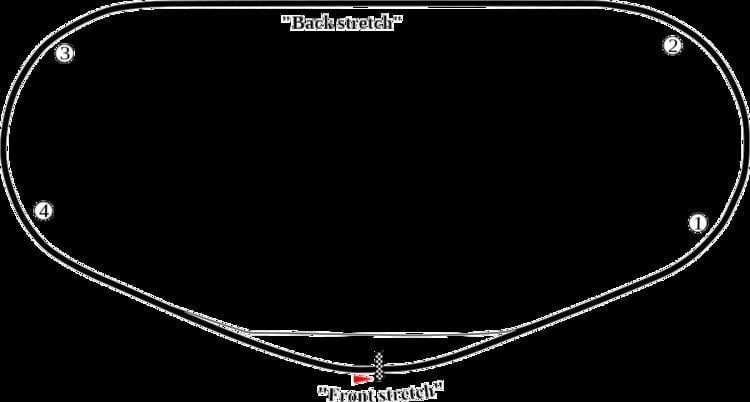 | ||
Date February 23, 1969 (1969-02-23) Location Daytona International SpeedwayDaytona Beach, Florida, U.S. Course Permanent racing facility2.5 mi (4.023 km) Distance 200 laps, 500 mi (804.672 km) Weather Mild with temperatures reaching up to 73 °F (23 °C); wind speeds approaching 12 miles per hour (19 km/h) Average speed 157.95 miles per hour (254.20 km/h) | ||
The 1969 Daytona 500 was a NASCAR Grand National Series (now Monster Energy NASCAR Cup Series) race held on February 23, 1969, at Daytona International Speedway in Daytona Beach, Florida.
Contents
Background
Daytona International Speedway is a race track in Daytona Beach, Florida, that is one of six superspeedways to hold NASCAR races, the others being Michigan International Speedway, Auto Club Speedway, Indianapolis Motor Speedway, Pocono Raceway and Talladega Superspeedway. The standard track at Daytona is a four-turn superspeedway that is 2.5 miles (4.0 km) long. The track also features two other layouts that utilize portions of the primary high speed tri-oval, such as a 3.56-mile (5.73 km) sports car course and a 2.95-mile (4.75 km) motorcycle course. The track's 180-acre (73 ha) infield includes the 29-acre (12 ha) Lake Lloyd, which has hosted powerboat racing. The speedway is owned and operated by International Speedway Corporation.
The track was built by NASCAR founder Bill France, Sr. to host racing that was being held at the former Daytona Beach Road Course and opened with the first Daytona 500 in 1959. The speedway has been renovated three times, with the infield renovated in 2004, and the track repaved in 1978 and 2010.
The Daytona 500 is regarded as the most important and prestigious race on the NASCAR calendar. It is also the series' first race of the year; this phenomenon is virtually unique in sports, which tend to have championships or other major events at the end of the season rather than the start. Since 1995, U.S. television ratings for the Daytona 500 have been the highest for any auto race of the year, surpassing the traditional leader, the Indianapolis 500 which in turn greatly surpasses the Daytona 500 in in-track attendance and international viewing. The 2006 Daytona 500 attracted the sixth largest average live global TV audience of any sporting event that year with 20 million viewers.
Summary
It was the 11th official running of the "Great American Race" and was run at its actual distance — 200 laps and 500 miles (800 km) — despite the fuel concerns. All the concerns about fuel eventually led up to the 1973 oil crisis that would affect the 1973 race (by forcing NASCAR to voluntarily reduce the number of laps for that year's race).
LeeRoy Yarbrough chased down Charlie Glotzbach, who had an 11-second lead. Yarbrough trimmed down the deficit and passed Glotzbach on the final lap. It was the first Daytona 500 won on a last lap pass. Yarbrough won in a back-up Ford car after crashing his primary one. This would also be the second-last Daytona 500 before it became the Winston Cup in 1971. Starting in 1971, all racers were to have 43 competitors maximum in a starting grid starting with the 1971 Daytona 500.
Using a grid of more than 43 competitors (commonplace during the 1950s and 1960s), the race track delivered racing action up to 157.95 miles per hour (254.20 km/h) for thousands of fans. In an era long before Daytona International Speedway, a restrictor plate track, it was famous for the many collisions that more than sixty vehicles faced while simultaneously drafting each other for a chance at the lead.
